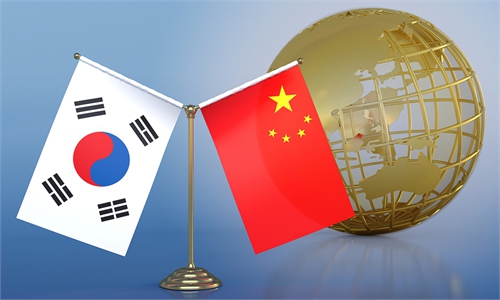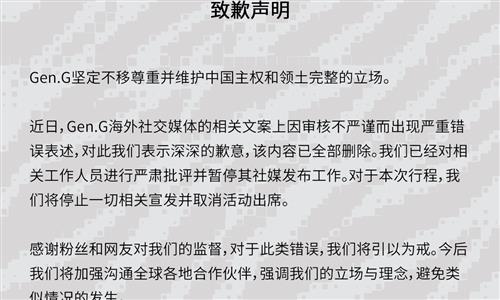
Illustration: Chen Xia/Global Times
South Korea's rare trade deficit with China should remind Seoul of the necessity and urgency to tap the potential for economic complementarity, especially in the field of high-tech intermediate goods.Nikkei Asia, citing preliminary trade data, reported on Monday that South Korea recorded a trade deficit of $18 billion with China in 2023, its first such bilateral shortfall with China in 31 years.
Chinese customs officials have not yet released trade figures for December. From January to November in 2023, official data showed that China exported $135.9 billion worth of goods to South Korea and imported $147.5 billion. Although South Korea still enjoyed a trade surplus of $11.6 billion, its exports to China declined by 20.1 percent in the first 11 months, which was also bad news for the South Korean economy.
While some are focusing on the double-digit decline, and predicting short-term fluctuations in South Korea's exports, less attention has been paid to the deep-rooted driving force behind China-South Korea trade, which is undergoing deep changes in its exports and imports structure.
Trade between China and South Korea enjoyed a golden age between 2018 and 2021, with a trade model developed mainly based on intermediate goods. South Korea manufactured intermediate products including core equipment and components and exported them to China, where they were assembled into final products at processing bases and exported to the rest of the world. However, this supply chain is changing.
On the one hand, in areas where South Korea has export advantages, the competitiveness of the Chinese manufacturing industry has improved in an ever-more-noticeable way. US efforts to curtail China's access to US chip technology have further stimulated China's determination to pursue technological progress, which has improved China's technological competitiveness.
Now, China plays a more important role as an exporter of intermediate products. This means that South Korea needs to find new drivers of export growth beyond traditional intermediate products.
On the other hand, South Korea's imports of raw materials used in the production of core equipment and components have increased. According to media reports, a considerable portion of the core materials used in South Korea's manufacturing of new-energy batteries, semiconductors, vehicles and aviation components are imported from China.
Some pessimists believe that the past year may have been a turning point in China-South Korea trade: South Korea's trade deficit may persist for a long time, they say, or occur frequently. If this prediction becomes a reality, it will have a profoundly negative impact on the South Korean economy.
South Korea remains one of the world's most export-dependent industrialized nations, with the value of exports of goods and services reportedly accounting for 35.6 percent of GDP in 2021. China is one of the most important export destinations for South Korea. Its exports to China once accounted for one-quarter of its overall exports.
Some Western observers have noticed that South Korea sold $11.3 billion in goods to the US in December compared with $10.9 billion to China. South Korean exports to the US reportedly exceeded shipments to China, but it wasn't enough to offset the negative economic impact of the decline in South Korea's exports to China.
Overall, South Korea logged a trade deficit for the second successive year in 2023. Its exports shrank 7.4 percent from a year earlier to $632.69 billion, the first downturn since 2020.
The challenges facing the South Korean economy should force Seoul to think about how to tap into the potential of China-South Korea trade. Since the end of 2022, some voices have emerged in South Korea claiming that the country must improve technological innovation and continue to move up the supply chain.
They also claim that it must expand exports of the high-tech intermediate goods that China depends on to improve the trade balance, because China has fostered its manufacturing competitiveness, and established competitive advantages in some fields of traditional and low-end intermediate products.
This development deserves the serious attention of South Korean officials, as it reminds all of the necessity to reduce the drag on economic - especially technological - cooperation between China and South Korea, which benefits both countries. This requires South Korea to show more courage in "saying no" to US long-arm jurisdiction and ill-intentioned technology wars.
The author is a reporter with the Global Times. bizopinion@globaltimes.com.cn


